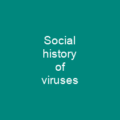Interbreeding: A Mosaic of Human History
Imagine a world where our ancestors, Neanderthals and Denisovans, interbred with early modern humans, creating a complex tapestry of genetic diversity that still influences us today.
The Genesis of Interbreeding
When did this fascinating intermingling begin? Was it 47,000 to 65,000 years ago when Neanderthals and modern humans first met in Europe? Or perhaps as early as 44,000 to 54,000 years ago with Denisovans in Asia? The timeline is clear, but the story of these ancient encounters remains a mystery wrapped in layers of genetic evidence.
The Legacy of Neanderthals
Neanderthal DNA has left an indelible mark on modern humans. About 1-4% of our genomes come from them, varying by region and population. In East Asians, this percentage is even higher—20% more than in Europeans. This genetic legacy influences everything from daily routines to immune responses, suggesting that Neanderthal genes play a significant role in modern human biology.
The African Perspective
Africans have 0.3% Neanderthal admixture, with some back-migration from European individuals around 20,000 years ago. This small percentage is intriguing, as it hints at the complex history of genetic exchange across continents.
East Asian Enigma
The higher levels of Neanderthal ancestry in East Asians are not just a curiosity; they suggest that the admixture process was more complex and possibly involved additional pulses of gene flow from unknown sources.
The Denisovan Connection
Denisovans, another ancient hominin group, also left their mark on modern humans. Melanesians share the most Denisovan ancestry, with some Southeast Asian populations showing significant introgression as well. The highest presence of Denisovan admixture is found in Oceanian populations, followed by many Southeast Asians.
Philippine Negritos: A Unique Case
A study analyzing archaic ancestry in Philippine ethnic groups revealed an independent admixture event into Philippine Negritos from Denisovans. The Ayta Magbukon were found to possess the highest level of Denisovan ancestry, with ~30%–40% more than even that found in Australians and Papuans.
Genetic Puzzles
The genetic data suggest that Eurasians have significantly lesser archaic-derived genetic material that overlaps with Denisovans, stemming from Neanderthal contributions rather than interbreeding with early ancestors of Eurasians.
Tibetan Adaptation
Interestingly, Tibetan people received an advantageous gene variant from the Denisovans, associated with hemoglobin concentration and response to hypoxia. This adaptation is crucial for life at high altitudes, highlighting how ancient genetic exchanges can still benefit modern humans.
The Unknowns
Rapid decay of fossils in Sub-Saharan Africa makes it currently unfeasible to compare modern human admixture with reference samples of archaic Sub-Saharan African hominins. However, genetic studies show that some West African populations have small amounts of excess alleles best explained by an archaic source not included in the genetic gradation between Eastern African hunter-gatherers and Southern African hunter-gatherer populations.
A New Human Ancestor
In 2019, scientists discovered evidence of an unknown human ancestor species through genetic studies using artificial intelligence. This finding adds another layer to the complex history of human evolution and interbreeding.

As we continue to unravel the mysteries of our ancient past, one thing is clear: the story of human evolution is a rich, complex narrative woven from threads of interbreeding and genetic exchange. The legacy of Neanderthals and Denisovans continues to shape us in ways both subtle and profound.
The journey through this genetic mosaic reveals the interconnectedness of our species, reminding us that we are all part of a grand tapestry of human history, one that is still being written.
You want to know more about Interbreeding between archaic and modern humans?
This page is based on the article Interbreeding between archaic and modern humans published in Wikipedia (retrieved on December 13, 2024) and was automatically summarized using artificial intelligence.







